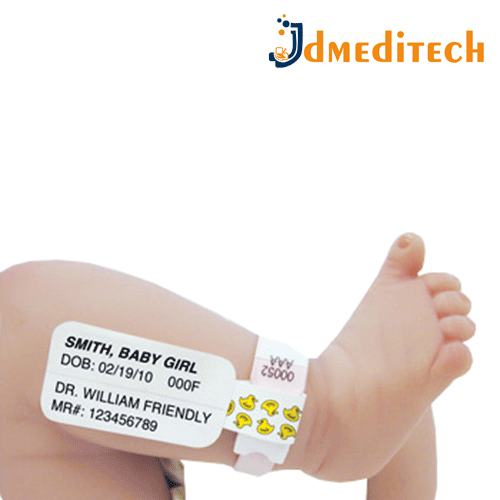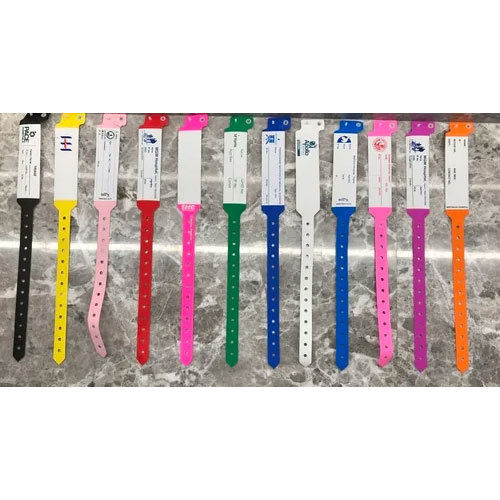The Connection Between a Patient Identification Band and Enhanced Patient Confidentiality
The Connection Between a Patient Identification Band and Enhanced Patient Confidentiality
Blog Article
Exploring the Different Types of Patient Identification Band Utilized in Clinical Facilities
In the detailed world of medical care, the essential role of Patient Identification bands commonly goes unnoticed. These bands, differing from easy paper wristbands to advanced RFID bands, form the foundation of Patient safety methods, making sure accuracy in Patient Identification.
Understanding the Value of Patient Identification Bands
While they may appear like mere accessories, Patient Identification bands play a vital duty in clinical centers. These bands offer as an important device for validating Patient identification, protecting against clinical mistakes associated with misidentification. The bands generally show necessary information such as the Patient's name, age, blood group, and any well-known allergic reactions. They allow health care specialists to promptly access this crucial info, therefore assisting in precise and prompt clinical treatment. Patient Identification bands also help in improving administrative jobs, ensuring precise record-keeping and payment. Despite their simplicity, these bands symbolize the concept of Patient safety, a keystone of high quality health and wellness care. Without them, the danger of clinical mistakes, and subsequently, Patient injury, could considerably enhance.
Conventional Paper Wristbands: Their Usage and Limitations
Conventional paper wristbands have been a staple in Patient Identification throughout numerous medical centers. While their use is extensive, they nurture certain restrictions that may impact their effectiveness in Patient monitoring. This section will focus on the range of their application and the fundamental drawbacks connected with their use.
Paper Wristbands: Usage Scope
In the world of Patient Identification, paper wristbands have long held a crucial role. These bands are usually made use of in outpatient setups, where the Patient's stay is short-term. The wristbands include essential information such as the Patient's name, day of birth, and a distinct Identification number. This easy, yet reliable system, allows physician to quickly and precisely identify patients, making sure the appropriate treatment is administered. Paper wristbands are additionally made use of in emergency situation scenarios, where quick Identification is vital. Their use prolongs to events like blood contribution drives and mass inoculation programs, further stressing their adaptability. Regardless of advancements in technology, the humble paper wristband stays a reputable and economical service for Patient Identification in different health care circumstances.
Limitations of Paper Wristbands
Despite their prevalent usage, paper wristbands are not without their disadvantages. In addition, paper wristbands frequently do not have the technical abilities of more modern options, such as barcoding or RFID chips, limiting their performance to merely presenting created info. Paper wristbands can trigger discomfort or skin irritation to some patients, specifically when put on for extended periods.
Barcoded Wristbands: Advancements in Patient Identification
While Patient Identification has long been an important facet of health care, the introduction of barcoded wristbands represents a considerable jump onward. These bands utilize the simpleness of barcoding technology, permitting for Patient information to be promptly scanned and accessed. They boost the rate and accuracy of Patient Identification, minimizing the threat of clinical mistakes connected to misidentification. Barcoded wristbands are economical, easy to generate, and eliminate handwriting errors typical with manual systems. They are not without limitations. While they offer enhancements over typical bands, the barcode can come to be smudged or worn, providing it unreadable. Regardless of this, barcoded wristbands remain a vital tool in contemporary healthcare setups, symbolizing the intersection of innovation and Patient treatment.
Superhigh Frequency Identification (RFID) Bands: an Action In The Direction Of Futuristic Health Care
The advancement of Patient Identification bands has actually caused the development of Radio linked here Regularity Identification (RFID) Bands (patient identification band). These cutting-edge devices existing key advantages for medical care facilities, using a more reliable and highly progressed ways of Patient Identification. The application of RFID in medical care is a significant step in the direction of a much more futuristic approach to Patient administration and safety and security
Understanding RFID Bands

RFID Bands: Secret Advantages
Mostly, these bands improve Patient security by supplying precise, instant Identification, thus minimizing clinical errors. RFID bands can store a huge quantity of Patient information, including clinical background and allergies, allowing individualized care. Overall, RFID bands represent a significant advancement in Patient Identification innovation, benefiting both clients and health care suppliers.
Carrying Out RFID in Medical Care
As we enter a technologically sophisticated period, the execution of RFID bands in healthcare becomes increasingly essential. These bands give a seamless method to track and determine patients, ensuring their safety and improving effectiveness in therapy procedures. RFID bands offer various benefits over traditional Identification approaches. They can keep a substantial quantity of information, including the Patient's case history and treatment plans, which can be easily accessed by health care companies. This information helps doctors make educated choices relating to the Patient's therapy strategy. In addition, RFID bands decrease click here to find out more medical mistakes by providing accurate Patient Identification, which is important in preventing misdiagnosis or wrong medicine administration. Hence, the implementation of RFID bands is a significant step in the direction of enhancing Patient safety and medical care shipment.

Color-Coded Wristbands: Aiding in Quick and Accurate Diagnosis
In the busy environment of a medical center, color-coded wristbands have actually become important devices for swift and specific Identification of a client's medical problem. These wristbands, used by clients, carry details colors that correspond to various medical problems or conditions. Red could show allergic reaction risks, while yellow could represent a fall danger. This system is developed to supply instant visual hints to doctor, boosting Patient safety and care high quality. In emergency scenarios, using these wristbands enables quick decision-making. Nevertheless, the performance of color-coded wristbands depends upon the uniformity of shade interpretation throughout healthcare establishments, needing usual requirements for consistent application.
Approaches for Efficient Execution and Monitoring of Patient ID Bands
Achieving optimal use Patient Identification bands demands a well-structured strategy for their execution and monitoring. The initial action involves training all wellness employees on the significance of correctly applying and reviewing these bands. Health centers ought to systematize the usage of ID bands across all divisions, guaranteeing harmony and lowering discrepancies. Normal audits must be conducted to confirm adherence to policies and to remedy any kind of disparities. Patient education is additionally essential; people should comprehend the purpose of the bands and the need for their continuous wear. patient identification band. It's important to have a back-up strategy in place, such Learn More as barcode scanning or biometrics, to guarantee that Patient Identification is never ever jeopardized.
Verdict
Patient Identification bands are critical in clinical facilities to guarantee security and precision. Standard paper, barcoded, RFID, and color-coded wristbands each hold distinct benefits, varying from cost-effectiveness to advanced data storage space and instantaneous clinical signals. Reliable application and administration of these bands can significantly lower clinical mistakes, improve effectiveness, and improve total Patient treatment. Thus, understanding and utilizing these Identification devices is extremely important for keeping high requirements in health care.
These bands, differing from easy paper wristbands to sophisticated RFID bands, form the foundation of Patient security protocols, making certain precision in Patient Identification.The evolution of Patient Identification bands has actually brought about the introduction of Radio Regularity Identification (RFID) Bands. Generally, RFID bands represent a significant development in Patient Identification modern technology, benefiting both individuals and healthcare companies.
RFID bands lower clinical mistakes by giving accurate Patient Identification, which is important in preventing misdiagnosis or incorrect medicine management. Patient education and learning is likewise critical; individuals have to recognize the purpose of the bands and the demand for their constant wear.
Report this page